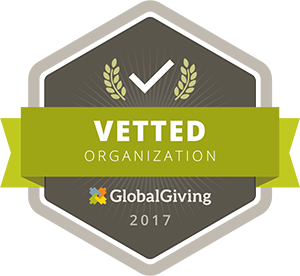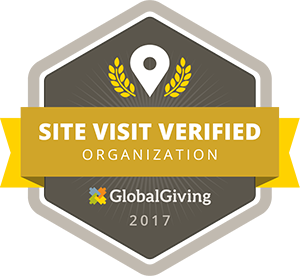Mindfulness
What is it?
Mindfulness is opening to the present moment whatever it is, without judgment, without attachment, without preference and without aversion. Just paying attention to WHAT IS. Mindfulness awareness is also the meeting point of inner and outer transformation of unnecessary suffering, and is cultivated through meditation and other forms of personal growth work.
We can usually all agree that we all suffer to some extent, mentally, emotionally and physically. The cause of most unnecessary suffering is that we want things to be different, and so we compulsively grasp and push away our experiences, rather than using them to learn and grow. There are two ways we tend to want things to be different: We want what we don't have (grasping or attachment), or we don't want what we do have (aversion or detachment). We are also influenced by our fears and our shadows - the parts of ourselves that we do not accept in ourselves and others. When a charge or strong feeling arises from these circumstances, without contemplation, we may react in ways that cause further harm to others. Therefore, the first step of mindfulness is looking deeply and seeing clearly the root of our own suffering.
First, grasping or attachment: We want what we don't have. What is it that we prefer in life - physical comfort, economic security, power, happiness? When we seek something we can easily become too attached to getting what we want and think that unhappiness comes from not having it. In fact, grasping, greed, envy and attachment to an agenda or outcome can actually work to prevent happiness. This does not mean we do not act to change things, but we do so with compassion for ending suffering. We can withstand it, be with it and choose to transform it with consciousness, not with selfish urgency because we think we will find happiness in having things be a different way.
Second, aversion or detachment: We don't want what we do have. We spend a lot of time trying to avoid the potential for suffering. We don't like being uncomfortable, feeling sad, feeling discontent, feeling grief, feeling powerless or feeling fear. We have to be aware of aversion because sometimes we act out of fear or anxiety in a way that causes us to put up boundaries between ourselves and another, or harm others in meeting our own needs.
Third, shadows: It is important to pay attention to shadows, because when we do not, they may express themselves unconsciously. This particular analogy by poet Robert Bly might be helpful: When we were young and as we grew up, we had people around us telling us not to be a certain way. Perhaps our parents said we should be responsible, so we carried this invisible bag behind us and put in the bag the side of us that wanted to be spontaneous and irresponsible. Then our community said girls are supposed to be a certain way and boys are supposed to be a different way, and so we put those parts that were not appropriate into a bag. For example, in American culture it is not often acceptable for a boy to cry, so many men put away their sensitive sides into this invisible bag. Then friends told us that we had to act a certain way and we put the things that we felt uncomfortable with in the bag. By the time we got older, the bag was very big and heavy. And it still holds the parts of us that we don't like. In fact, we often dislike the same things in other people because we are not willing to recognize the same in our selves. Many men would look down upon another man who is crying because they have been taught that is not okay. Instead, when we can accept these things in ourselves, we will more easily accept them in others. When a person is completely themselves, they are contributing to the whole of the rest of us.
If left unconscious, at the extreme, these tendencies can create intolerance, fear, hatred, feelings of supremacy and violence. Even those who are trying to do good may create harm from unconscious reactivity in milder ways. Mindfulness of our unconscious patterns helps us avoid reactivity, cultivate compassion and act with wisdom to alleviate suffering for ourselves and others.
Why is it supportive of Conscious Change Agents?
Mindfulness allows us to pay attention to our feelings so that we understand where they come from without reacting and causing harm. As we use mindfulness to increase our awareness, we find that we have the ability to consciously choose either to accept the things we cannot change, or identify the things we can change and act to do so. The more we use mindfulness to see how suffering arises in ourselves, the more we can understand the root of suffering in others. The more we understand suffering in others, the more we are able to feel compassion for those who create harm out of aversion, fear and attachment. Over time, we may find that we can break down the perceived divisions between "us" and "them" even in our own social justice work, as our sense of interconnectedness grows.
How can I experience it?
Mindfulness Activity 1: Aversion/Attachment
Close your eyes and think about something in your life with which you are unhappy. Notice the emotions that arise and just be with them without trying to change them. What are those feelings teaching you? What are you hoping to avoid? What do you wish would be different? What underlying fears exist? What is the truth that is arising? Take five minutes to sit with your eyes closed and just notice the feelings and thoughts that arise.
What if right now today you made a choice to either accept or change your situation? You may find that the emotions that have arisen from your discomfort, anxiety, aversion, fear, grasping or feeling stuck have also distracted you from accepting or changing things. Certainly all feelings are valid. But, feelings themselves are also impermanent. And, once you make a choice to accept or change your situation, you may find that your feelings will begin to transform or fade. Mindfulness allows us to act from a place of wisdom, rather than allow our emotions and feelings to cause us suffering or to cause us to react out of aversion.
Mindfulness Activity 2: Unconscious Reaction versus Conscious Response
How do we harm others? When we are not fully present with our feelings and responding from wisdom, we instead react. As Donald Rothberg describes in his book, The Engaged Spiritual Life, often we "pass on the pain" when we are irritated, angry, embarrassed or impatient, so we lash out at others.
FEEL → REACT (unconsciously)
How do we instead respond with wisdom? We start by increasing the space between noticing our feelings and taking action.
FEEL → STOP, BREATHE, BE, LISTEN, SEE CLEARLY (no aversion or grasping) → RESPOND (consciously)
Consciousness starts with a state of mind and then influences your actions. Practicing meditation, breathwork and other forms of mindfulness allows us to cultivate greater self-awareness so that we can recognize the cues that often underlie our unconscious reactions. Then, we must find ways to respond to pain, even if it is born of oppression and injustice in a way that does not inflict pain on others. It does not mean that we are trying to make everything okay for everyone. It means that we are trying to do no harm. The more we are aware of our reactivity and tendencies, the better able we will be to transform pain.
Since we are not always in a place where we can sit down in meditation before we need to respond to a quickly unfolding situation, we can instead use a few slow breaths to lengthen the space between our feelings and our response:
- First, it is important to recognize when you feel an emotional "charge". This can be a rush of fear, anger, contempt, embarrassment, defensiveness, etc. If you can stop yourself from immediately reacting, then,
- Close your eyes and take three deep breaths.
- Allow yourself to explore what emotion is arising. Notice your feelings and be with them for a moment. Try to see clearly and understand from where they are originating. Is this an unhealed place in your self? Is there a fear, aversion or attachment present? Is there a need in yourself that needs to be attended? What truth is arising for you?
- Allow yourself to feel compassion for yourself and gratitude for your underlying instinct to protect yourself.
- Then ask yourself: what is the highest path? What response is needed to transform suffering for self and/or other in this situation? What are your intentions?
- Respond and act with consciousness and with wisdom.
Further reading:
Carroll, Michael. "Awake at Work: 35 Practical Buddhist Principles for Discovering Clarity and Balance in the Midst of Work's Chaos." Boston: Shambhala Publications, Inc., 2006.
Fernandes, Leela. "Transforming Feminist Practice: Non-Violence, Social Justice and the Possibilities of a Spiritualized Feminism." San Francisco: Aunt Lute Books, 2003.
Rothberg, Donald. "The Engaged Spiritual Life: A Buddhist Approach to Transforming Ourselves and the World." Boston: Beacon Press, 2006.
Tolle, Eckhart. "The Power of Now: A Guide to Spiritual Enlightenment." Vancouver: Namaste Publishing, 2004.
Zweig, Connie and Jeremiah Abrams, editors. "Meeting the Shadow: The Hidden Power of the Dark Side of Human Nature." New York: Penguin Putnam, Inc., 1991.
Global Grassroots
1950 Lafayette Road
Suite 200, Box 1
Portsmouth, NH 03801 USA
Tel (+1) 603.787.5759
info@globalgrassroots.org
© 2023 Global Grassroots 501(c)(3) Non-Profit







Contact Us